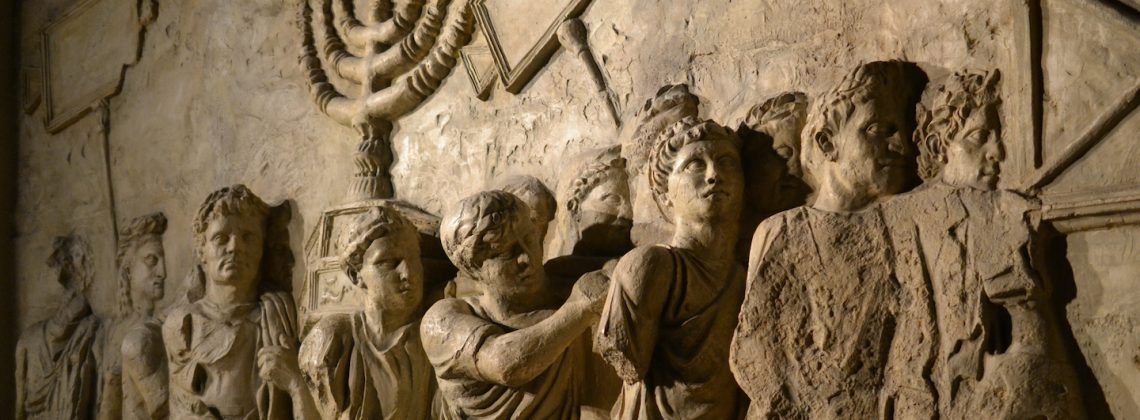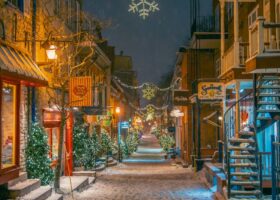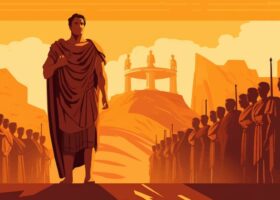Many Emperors have built and dismantled the Rome we know today. Of them, which were the most accomplished? What types of works did they create in Rome’s cityscape? In this article, I present my favorite, 7 most accomplished emperors and show you some of their works in Rome and beyond. All written by a PhD historian!
JULIUS CAESAR, Paving the Way for the Empire
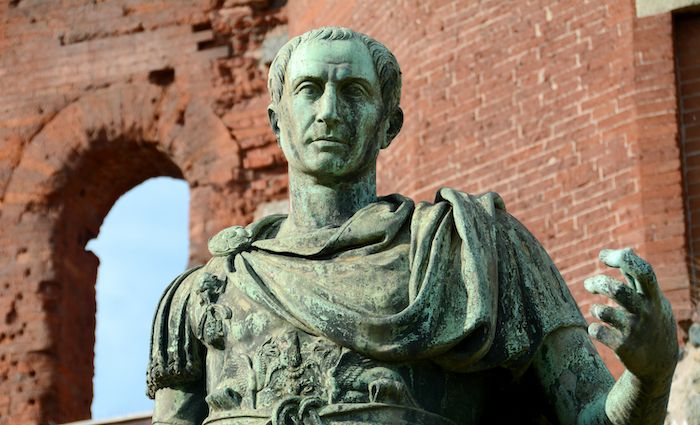
27 BC | First Emperor | Octavian
The end of the Roman Republic did not happen fast and caused tumultuous and intense years of civil war. These revolutionary decades, and the increase of power in individual hands, threatened the Republican system that had ruled for centuries. Ultimately, they led to the end of Rome as a Republic and the beginning of a new Rome as an Empire.
Life: circa 100-44 BC. Ascendancy to Total Power: 46-44 BC
Julius Caesar played an essential role to pave the way for the Empire. He was born circa 100 BC in a patrician family and held different positions over his career. In 61 BC he became governor of the Roman territories in current Spain.
His ascension to power started in 60 BC after joining Pompey and Crassus in what historians know as ‘the First Triumviarte’. After Crassus’ death, the alliance broke down. In addition, Pompey had started a personal ascension to power, gaining the favor of the Senate while Caesar was in Gaul carrying out military campaigns.
At some point, Pompey and the Senate ordered Ceasar to give up his armies and return to Rome. However, Caesar refused and defied them by crossing the Rubicon in 49 BC. By law, Roman governors were not allowed to cross the Rubicon River without being invited by the Senate — Caesar did this with an army!
This resulted at the beginning of a civil war won by Caesar in 46 BC. After this, Ceasar became the sole dictator of Rome and, as such, carried out numerous reforms and even established his own calendar.
Among his urban projects, the most famous is Caesar’s Forum. Cicero described how Caesar asked him to acquire the land to build the complex. The complex housed a temple dedicated to Venus Genetrix and was inaugurated in 46 BC when it was still unfinished, as Filippo Coarelli.
A group of senators assassinated him on the Ides of March (15 March) of 44 BC less than a year into his reign. The senators who kill him were trying to save the Republic, but it was too late! The Empire was about to begin.
1. CAESAR AUGUSTUS, The First Emperor
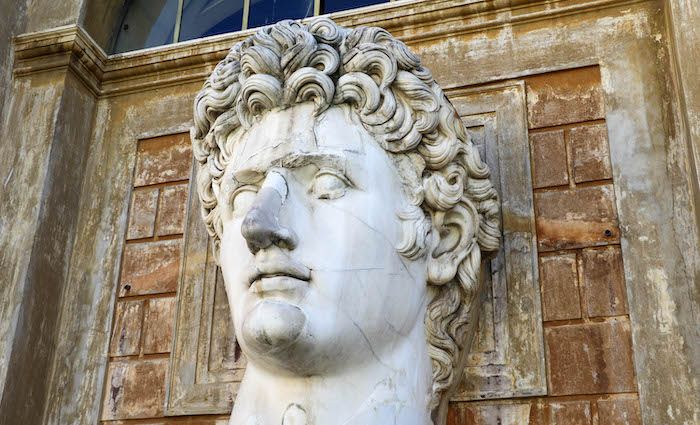
27 BC | First Emperor | Octavian
Life: 63 BC – AD 14. Emperor: 27 BC – AD 14
Augustus is famous for transforming Rome from a city of brick into a city of marble, as Suetonius noted. After becoming emperor in 27 BC, he undertook numerous architectural projects that changed Rome’s cityscape. He brought a new image into Rome, showing his power, propaganda, and the new order of his reign.
In 7 BC, he divided the city into 14 administrative regions, as archaeologist Amanda Claridge notes. By doing this, he renewed the previous four districts from the old city and established new urban planning. He built new roads and expanded the old road network. In addition, he implemented Rome’s water supply by repairing aqueducts or building new ones. One of the aspects that most amazes archaeology lovers is the buildings projects he undertook! In the Empire, he brought peace, prosperity, and economic prosperity that led scholars to associate his reign with an authentic revolution.
Major Works
Augustus restored old buildings or built new ones in the city of Rome. Archaeologists have discovered the imprints of his influence and projects all over the city… and you can visit some of these sites. Here are some tips!
The major project was the Forum of Augustus, built in Rome’s heart, next to the Forum of his predecessor Julius Caesar. The forum was dedicated in 2 BC and housed the Temple of Mars Ultor (the Avenger). Paul Zanker indicates how the decoration of this forum showed Augustus’ lineage and power through images, as archaeologist Paul Zanker mentions. Today, you can observe its remains from Via dei Fori Imperiali.
To commemorate Augustus’ victories in Gaul (France) and Hispania (Iberian Peninsula), the Senate of Rome built the Ara Pacis. This altar celebrates the peace Augustus brought to Rome and was consecrated in 9 BC. In addition, it depicts the imperial family. Archaeologist Amanda Claridge notes how the current museum reproduces the original situation of the altar, where you will find out more about Augustan Rome.
Augustus’ reign witnessed the construction of many other buildings, such as the theatre of Marcellus, the pyramid of Gaius Cestius, or the tombs of the ‘Servilii’ and Caecilia Metella on the Via Appia.
Augustus decided to rest eternally in a monumental mausoleum recently reopened. Located next to the Ara Pacis, this circular tomb housed the remains of the emperor and his family. Today you can visit the remains of the structure left after thousands of years in a recently opened museum.
2. NERO, the Extravagant
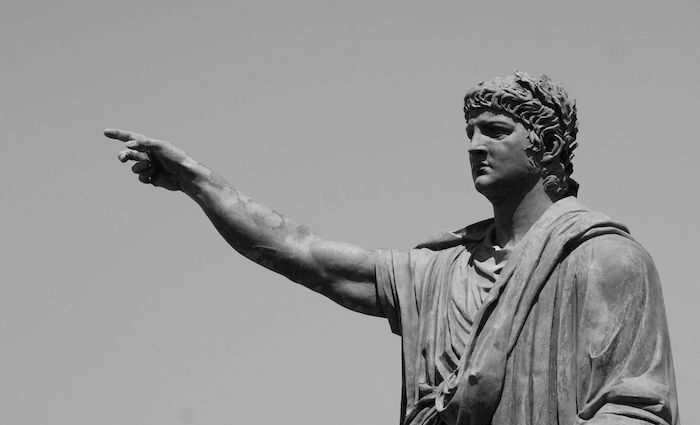
AD 64 | Great Fire of Rome | Domus Aurea
Life: AD 37-68. Emperor: AD 54-68
An extravagant personality and behavior involving sexual pleasures is the legacy of Emperor Nero. Traditional sources portrayed him as the person who ordered the Great Fire of Rome in AD 64. However, Tacitus indicated he was outside Rome when the fire started. Furthermore, he indicates how Nero helped with the relief works afterwords.
In spite of the fame of his reign, the early years were prosperous. At the beginning of his reign, his mother Agrippina, Seneca, and Burrus advised him and he prospered. Over time, he became more independent and behaved in the tyrant manner authors such as Suetonius or Tacitus described.
Sources indicate that Nero murdered his mother Agrippina, his brother Britannicus, and his first wife Octavia. Moreover, his adviser Seneca was made to commit suicide after being accused of a conspiracy against Nero.
Major Works
After the Great Fire of Rome in AD 64, he developed an extensive urban program in the heart of the city named Domus Aurea.
This palace complex was built between circa AD 65-68 to replace the previous Domus Transitoria. Its name derives from the lavish and rich decoration of the building, which has astonished visitors since its discovery until nowadays.
Author Suetonius mentions a circular and rotating dining room in the Golden House which is impressive even in current times. The outdoor complex had a vast lake where the Colosseum stands today and a monumental colossus of emperor Nero.
Nero also built a luxury palace which included a theatre in Antium, current Anzio, the city where he was born. There, he also established a colony of veterans of the Praetorian Guard and built a vast port.
3. TITUS, the ‘Protector of the Empire’
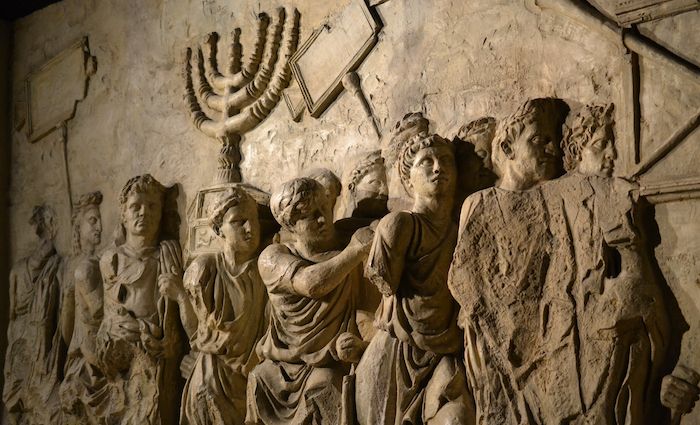
Jerusalem | Colosseum | Arch of Titus
Life: AD 39-81. Emperor: AD 79-81
Titus was famous among the Romans for his military role in the protection of the Empire. During his father Vespasian’s reign, he received the command of the Jewish war, which ended with the siege and destruction of Jerusalem in AD 70. On his return to Rome, Titus became the commander of the Praetorian Guard and gained popularity to succeed his father Vespasian after his death in AD 79.
His brief but intense reign started with huge challenges, such as the eruption of Mount Vesuvius in AD 79 and the destruction of Pompeii, Herculaneum, and other Vesuvian sites. His popularity augmented after organizing relief campaigns and urban programs to resettle refugees in cities such as Neapolis (Naples) or Cumae.
In spite of this, he successfully helped refugees and continued urban programs in the city of Rome. His sudden death at the age of 41 resulted in his brother Domitian’s succession as the next emperor.
Major Works
Titus popularity increased by making of public use some of the previous private’s residences. For instance, he redeveloped Nero’s baths in Esquiline Hill and converted them into public baths, as archaeologist Amanda Claridge mentions.
However, his generosity with the Romans went further and he finished the massive building project initiated by his father Vespasian: the Colosseum. The popular name of this amphitheater, the Colosseum, results from the giant Nero’s colossus statue, which stood next to it for centuries.
The Amphitheatrum Flavium, or Colosseum, is the largest amphitheater from the Roman world and it took about 10 years to be fully completed. Titus inaugurated the building with ceremonial games that lasted 100 days.
After Titus’ sudden death in AD 81, he was deified or declared a god. The good reputation he left in the memory of Rome is evident in the famous Arch of Titus. As archaeologist Amanda Claridge indicates, the inscription shows the arch was built or finished after Titus’s death in AD 81, and this is demonstrated by the iconography, which shows Titus deified. In addition, the arch showcases decoratives reliefs celebrating Titus’ victory in Jerusalem in AD 70.
4. HADRIAN, the Traveller
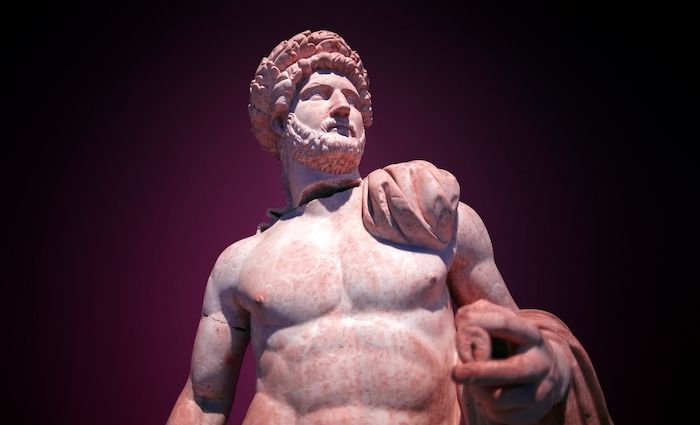
Spain | Pantheon | Tivoli
Life: AD 76-138. Emperor: AD 117-138
Hadrian is famous for his travels. After being three years in Rome, in AD 121 he set forth on a tour across the Roman Empire to visit and control the vast frontiers established by his predecessors. He started his trip visiting the western provinces, which occupied current France, Germany, Britain, and the Iberian Peninsula. After that, Hadrian traveled to the east and subsequently returned to Rome in AD 125. In AD 128, he continued his ‘Empire-tour’ visiting current North Africa, Greece, Turkey, the Aegean territories, and the Balkans, in the east.
With intermittent stops in Rome, Hadrian traveled across the majority of provinces. By doing this, he brought the presence of the emperor to territories away from the capital. Cities all over the Empire build new arches, buildings, and structures to commemorate his visit. And he minted new coin designs commemorating his visits to provinces too!
Major Works
Hadrian was passionate about art, philosophy, and architecture. Like any other emperor, he left his imprints in Rome’s cityscape… and nowadays you can visit some buildings. For instance, in circa AD 126 he rebuilt the Pantheon, which is one of the few Roman monumental buildings fully preserved. It could have been built by Apollodorus of Damascus, an architect active during the reign of Trajan, although no direct references exist.
In AD 609, the building became the Basilica of St. Mary and the Martyrs. In addition, another monument built by Hadrian was the Temple of Venus and Roma, just in front of the Coliseum.
Hadrian’s influence reached the farthest points on the edge of the Empire. He built the monumental Hadrian’s Wall (Vallum Hadriani in Latin) to protect the empire from the Picts in about six years.
His most personal and eclectic project, known as Hadrian’s villa, is found in Tivoli. The palace complex was like a small city that showcased the architectural styles he discovered during his travels. Hadrian’s villa included baths, places, a theatre, temples, gardens, dining rooms, pools… and even an astronomical observatory. Certainly, the emperor found in this spot the perfect place to rule the Empire when he was not traveling.
After his death, Hadrian’s decided to rest in a monumental mausoleum he built in Rome. You can visit its remains in the current Castel Sant’Angelo, which became a castle in the Middle Ages.
5. TRAJAN, the “Optimus Princeps”
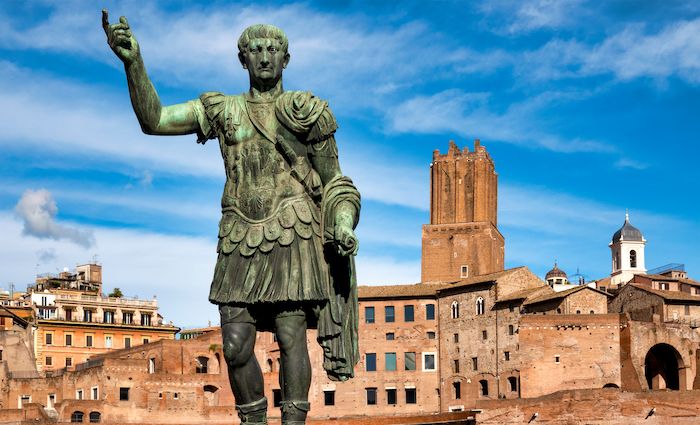
Trajan’s Column | Dacia | Trajan’s Forum
Life: AD 53-117. Emperor: AD 98-117
Trajan is famous for the popularity he gained among the Romans, and during the Middle Age. He became emperor in AD 98, after Nerva’s death. During his reign, he carried out military conquest to the east of the Empire, annexing territories in Dacia (Romania), Arabia, and Armenia, among others.
Archeologist Amanda Claridge refers to how the military glory and wealth he brought to Rome after his campaigns are reflected in his urban projects. Finally, Trajan died in AD 117 when he was returning from military campaigns against the Parthians.
Such was his popularity among the Romans, that emperors such as Septimius Severus added to his official literature that he was Trajan’s great-great-grandson and speaks of Trajan’s victory over the Parthians, as historian Julian Bennett mentions.
Certainly, Trajan is known to be an exemplar emperor who, despite being pagan, he was admired by Christians in the Middle Age. For instance, St. Gregory the Great interceded and prayed for his salvation because of the good service he had provided to people during his reign.
In addition, Trajan’s appearance in Dante’s Divine Comedy contributed to the increase of his popularity into the Middle Ages, Renaissance, and Modernity. His nickname, Optimus Princeps, translates to the Best Ruler.
Major Works
In AD 112 he inaugurated Trajan’s Forum when it was still unfinished. The project was designed by the famed architect Apollodorus of Damascus. Its sheer size led the writer Cassiodorus to affirm: ‘The Forum of Trajan, no matter how often we see it, is always wonderful’. This forum was composed of a monumental entrance, a vast, open square with an equestrian statue in its center, and the Basilica Ulpia (finished in AD 113).
Colonnaded porticoes with a sculptural decoration that included figures of the captured Dacians enriched the complex. Behind the basilica, a courtyard with libraries and the monumental column, finished in AD 113 and still standing, completed the building.
The column depicts the emperor’s victory in the Dacian Wars in a helicoidal frieze circa 200 meters long. After Trajan’s death in AD 117, to commemorate his memory, Hadrian built a temple to the deified deceased emperor whose location is still debated.
Trajan’s Markets were another impressive building erected under his reign, between AD 106-111. During my studies in Rome, Professor Eugenio La Rocca suggested I visit it as if I was shopping in a mall and the resemblance with current buildings is astonishing.
Hundreds of shops and other buildings made this complex a multifunctional area articulated in three levels in Rome’s city center. Claridge also mentions in the Rome Arcehgological guide that the structure was home to luxurious apartments that one could rent or purchase!
Among other urban development carried out by Trajan, I can’t omit the restoration of the Circus Maximus in AD 103, the construction of the largest public baths ever seen in the city until that moment (AD 104-109), and the construction of Rome’s tenth aqueduct.
6. MARCUS AURELIUS, the Philosopher
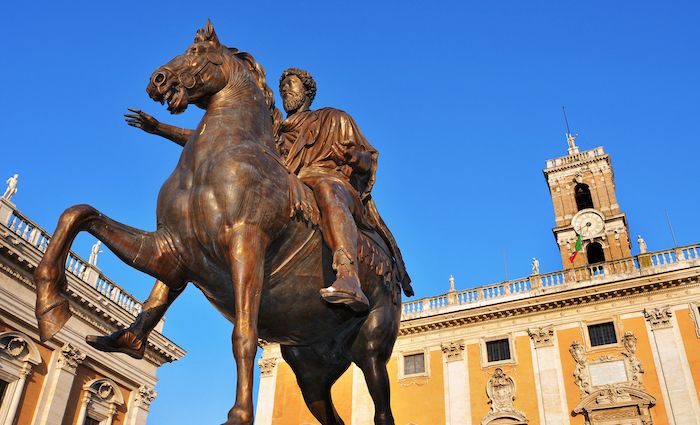
Second Century | Philosopher | Meditations
Life: AD 121-180. Emperor: AD 161-180
Marcus Aurelius is famous for his Stoic philosophy and the relative stability that characterized his reign. He reigned alongside his adoptive brother, Lucius Verus. After his death in AD 180, the relative peace characterizing the Empire since Augustus’ reign ended.
He fought the Parthians (AD 161-166) and the Germanic Tribes (AD 166-180). Finally, he died in AD 180 while being on a campaign in the Danube. Marcus Aurelius is known to have practiced legislation rigorously. Among his administrative reforms, the revaluation of the denarius stands out.
However, one of the most known challenges he faces as emperor was the outbreak of the Antonine Plague. Scholars locate the origin of this ‘ancient pandemic’ in Mesopotamia around AD 165, at the end of the campaign against the Parthians. Scholars believe this plague was smallpox.
Major Works
Like many other emperors, Marcus Aurelius left his imprints in the city of Rome, although not through great buildings, as Amanda Claridge mentions.
Close to Via del Corso, you can find the Column of Marcus Aurelius, dated between AD 180-193. The column, inspired by Trajan’s column, depicts his military campaigns and victory over the Sarmatians and Germanic tribes. Construction was actually carried out by Commodus after the reign of Marcus Aurelius.
One of the most impressive works associated with Marcus Aurelius is his equestrian sculpture. The Capitoline Museum houses the original statue, whilst the one in Piazza del Campidoglio is a copy. The main reason the statue still exists today, rather than being destroyed by Christians, is because they thought it to be Constantine the Great who legalized Christianity.
Marcus Aurelius is famous for his Meditations. He wrote them between 170-180 AD and the real title of his writing remains unknown. He wrote them in Greek, in an style that invites the reader to meditate and sefl-reflect. If you want to have a masterclass on stoicism and philosophy, his writing are a must.
7. CONSTANTINE I, the Christian
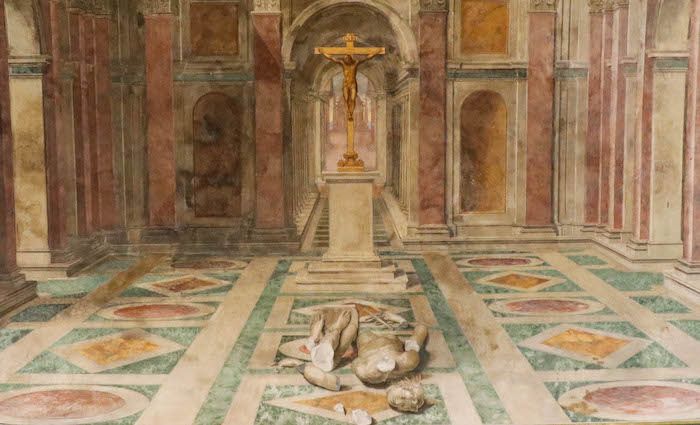
AD 312 | Milvian Bridge | St. Peter’s Basilica
Life: ca AD 280-337. Emperor: AD 306 (alone from AD 324)-337
Constantine is known for his adherence and eventual legalization of Christianity. He won the “battle” against Paganism when he defeated Maxentius in the battle of the Milvian Bridge in Rome in AD 312. From that point, he signed the edict of Milan and Christianity was a legal religion in the Roman world.
He claimed to have won the battle after a vision in which Christian symbols appeared on military standards. He associated his politics and power with this major life event as a platform similar to modern politicians. Since that victory, he supported Christians, legalizing their practices and banning their persecution.
He summoned the Councils of Arles and Nicea and proclaimed the Edict of Milan. By doing this, he contributed to the spread of Christianity. Moreover, he carried out administrative and monetary reforms during his reign.
Major Works
Emperor Constantine founded or commissioned at least 23 churches and Christian basilicas under his reign, as G.T. Armstrong noted. Rome, the traditional capital, housed monumental ones: from Basilica Constantiniana, now under San Giovanni in Laterano, to the old St. Peter’s Basilica, under the current St. Peter’s Basilica in the Vatican. The enormous building project carried out in the Vatican lasted years, and you can visit the excavations under the current basilica. Nevertheless, not everything was about churches for Constantine.
In the center of Rome, he also finished the construction of the Basilica of Maxentius in AD 313, the biggest of the Roman basilicas, which is circa 5.600 m2. One of the impressive works built during his reign was the Arddch of Constantine (AD 312-315). This monument was dedicated to Constantine by the Senate because of his victory in AD 312. The arch showcases remain from earlier monuments in Rome, such as Trajan’s Forum.
Outside Rome, for instance, he built impressive buildings in Trier (Germany), where he spent a few years. Constantine commissioned a vast palace around AD 310. The complex had the main hall (Aula Palatina), still preserved, which is the biggest reception room in the Roman world. Finally, in the same city, he also commissioned the public baths which are partially preserved nowadays.
Finally, Constantine rebuilt ancient Byzantium (current Istambul), which he renamed Constantinople. He established there the capital of the Empire in AD 330 and undertook monumental building projects. His goal was to build a new Rome!
